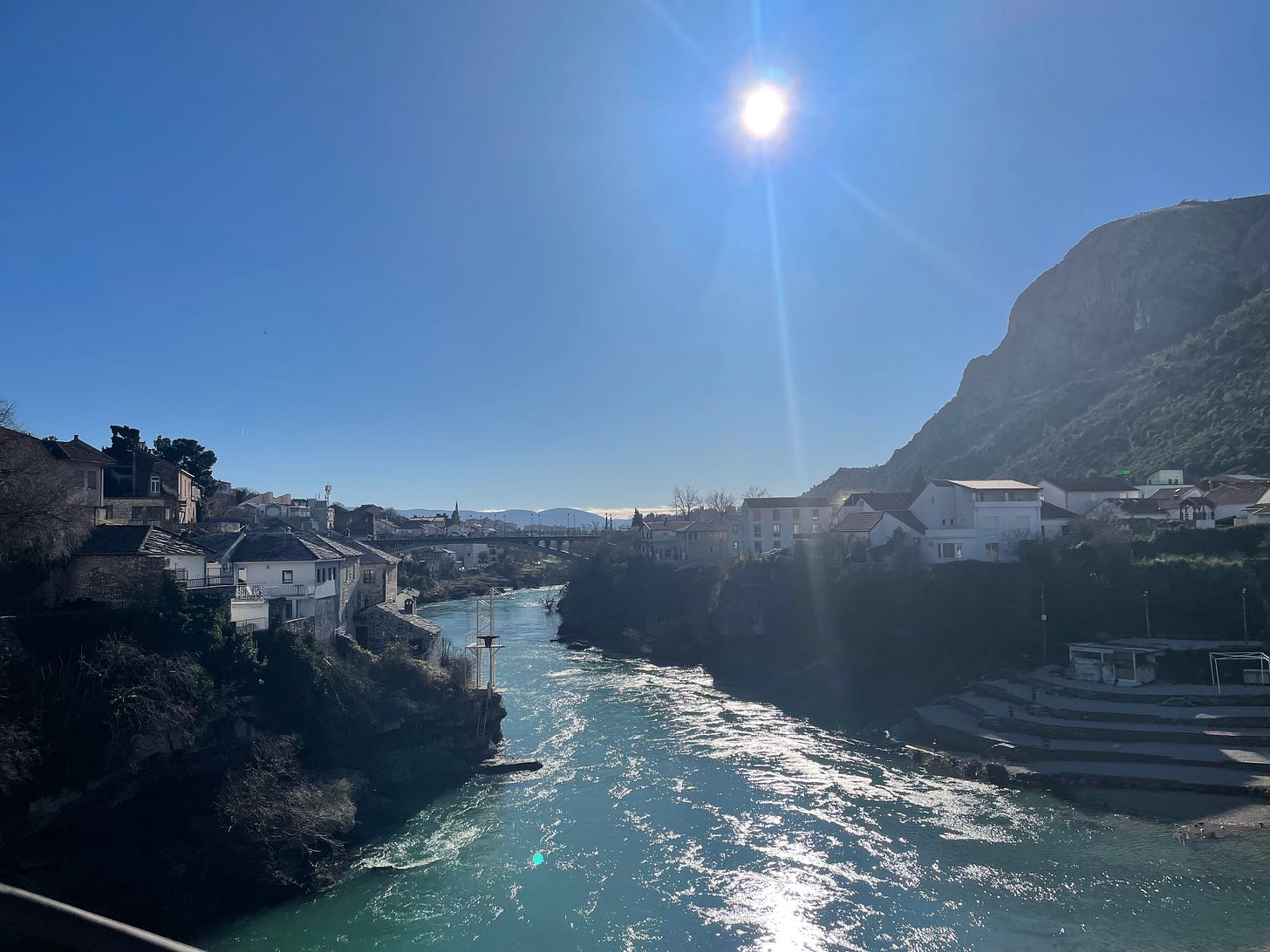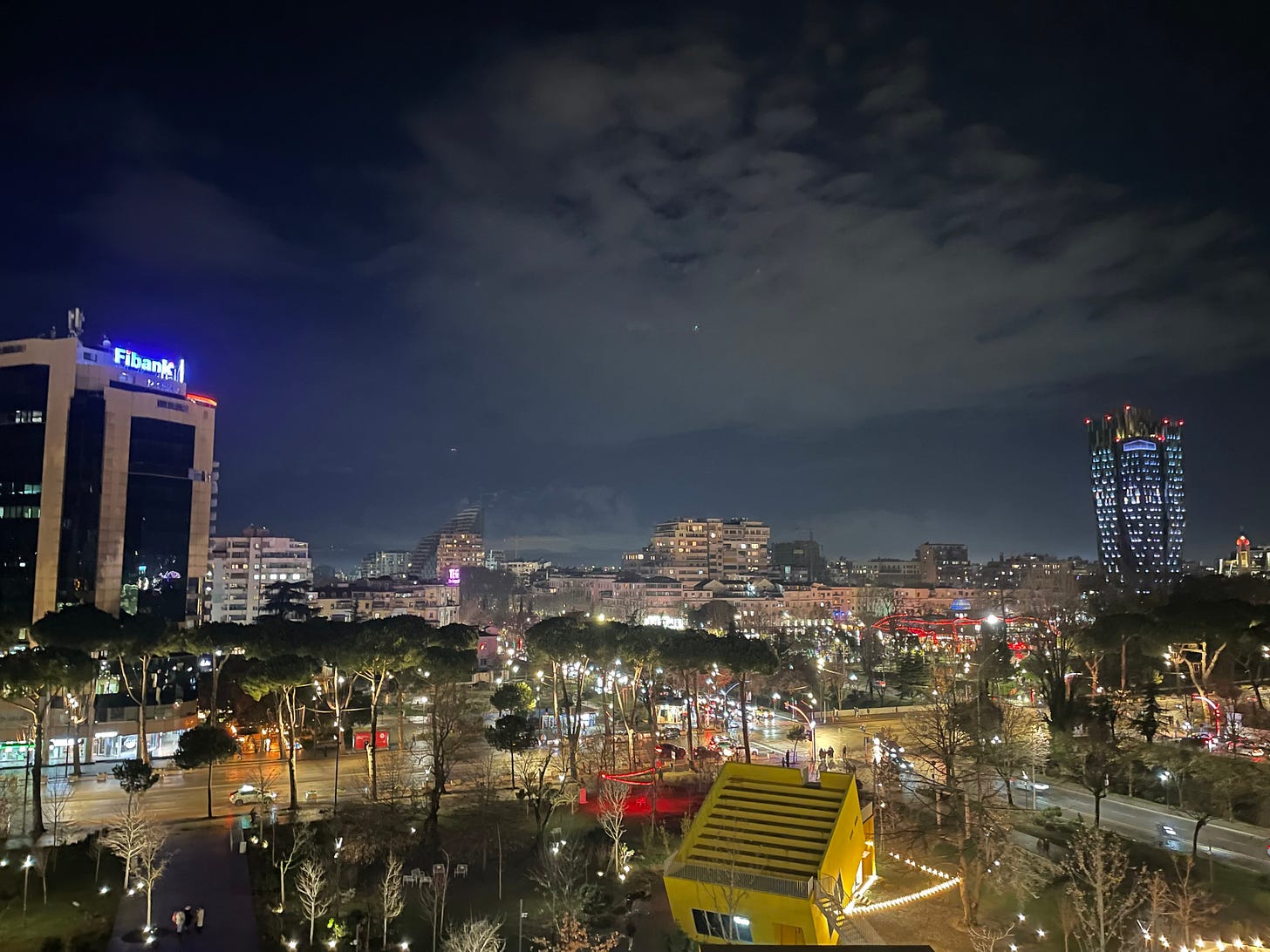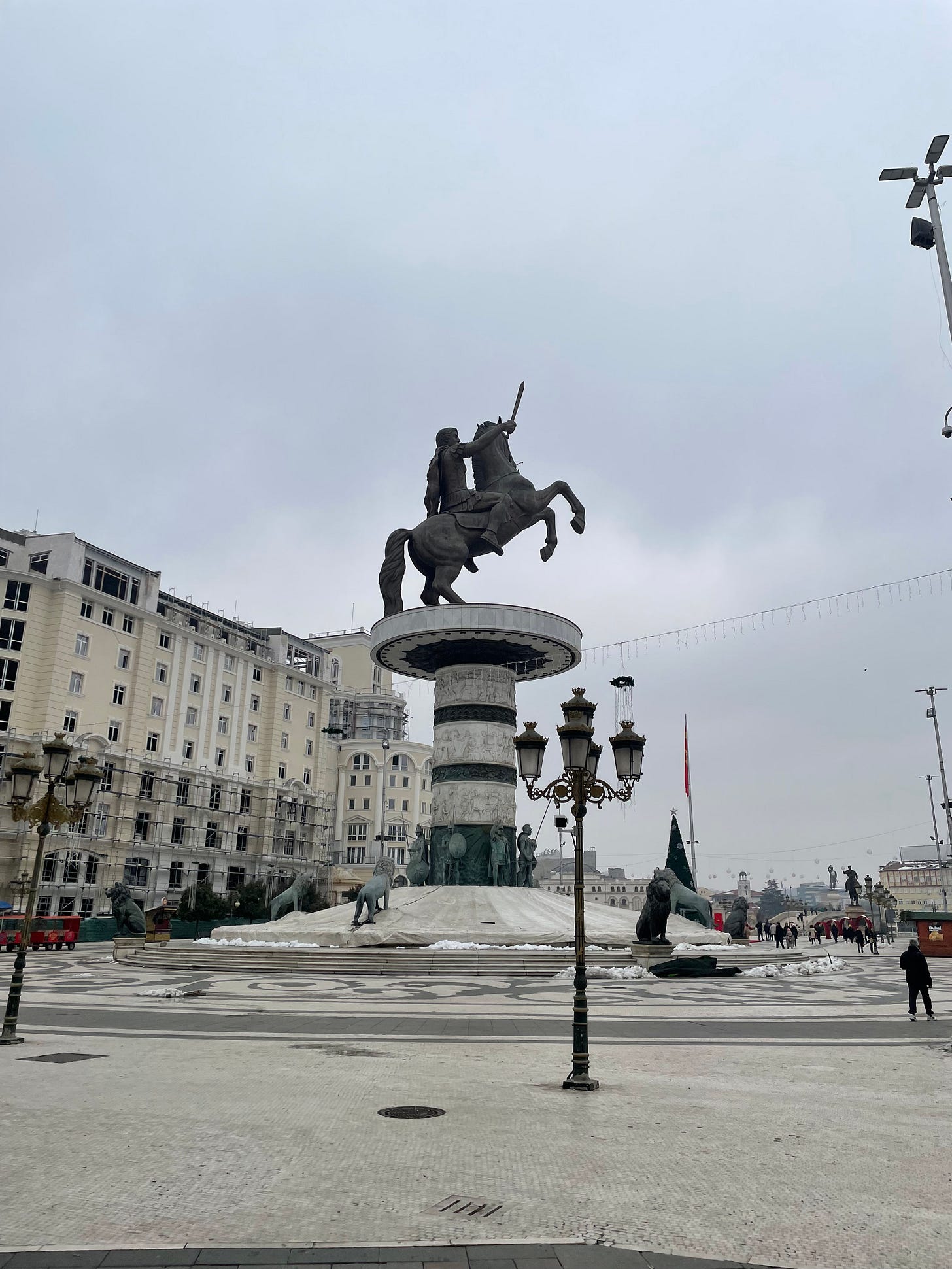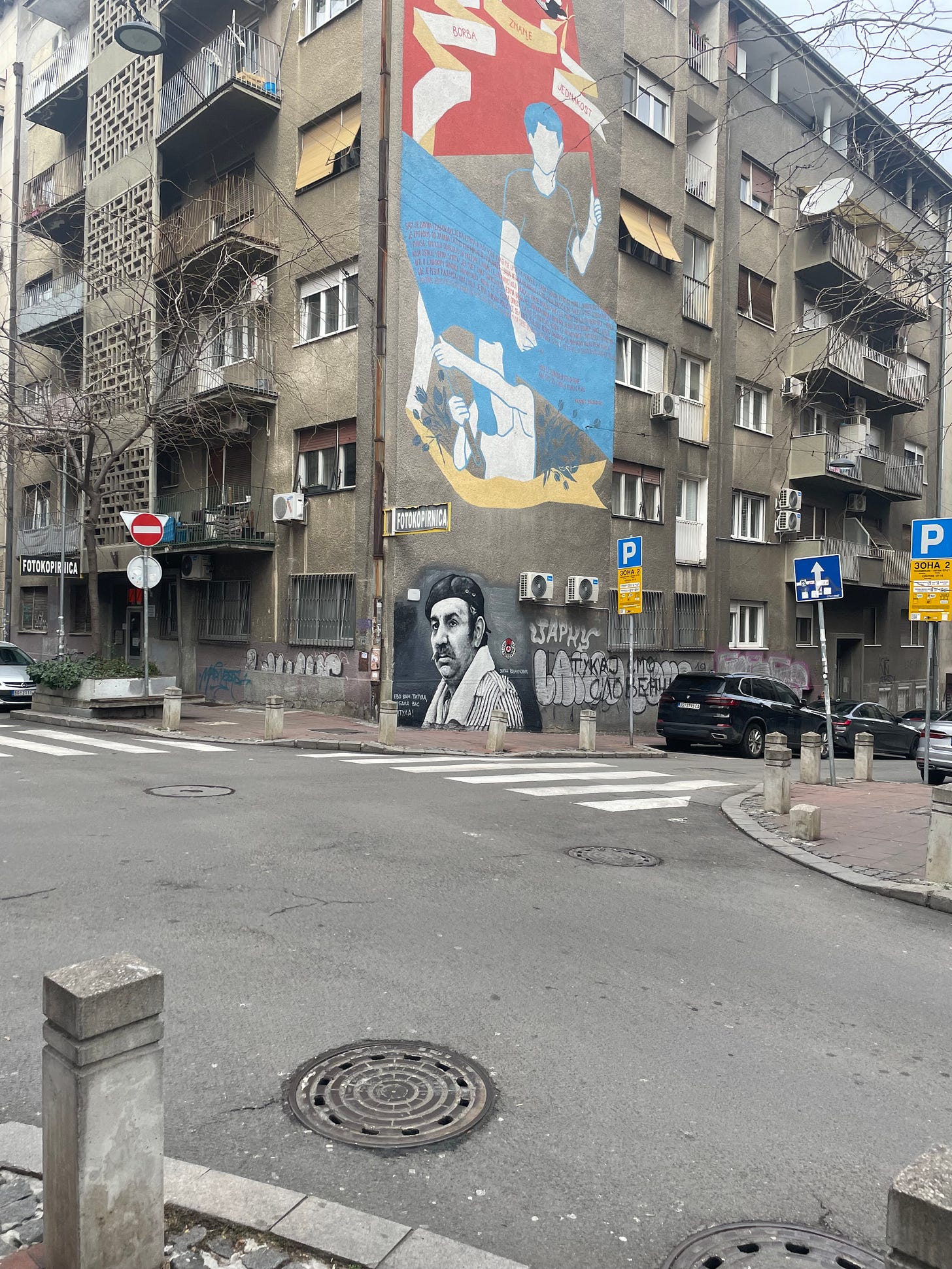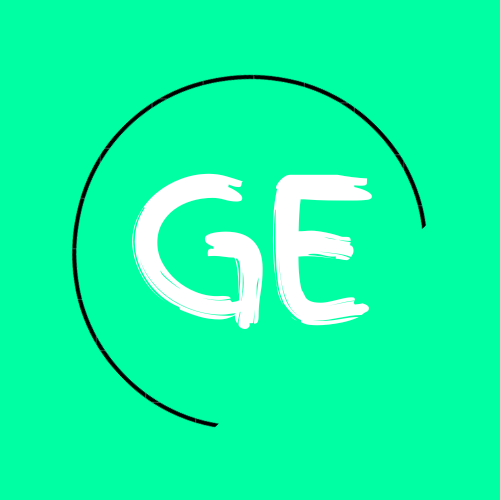Contents
Introduction
Connections In The Balkans
Strength In Numbers
The Future of The Balkans
Concluding Remarks
Bitesize Edition
As I was writing my post last week on the protests in Serbia, I found myself considering the future of the Balkans. Tensions still remain in the region, and I’ll explore the potential sources of these issues.
However, it is also a region of aspiration, be it EU or NATO for many countries in the region. Who seems most likely to join either grouping next?
Finally, I’ll explore why establishing a multiethnic Balkan region is difficult, but not impossible.
Introduction
Back when I wrote my series on the Balkans, I found it was more based on history than the present and the future. However, after spending a month in Bosnia and Herzegovina, Serbia, North Macedonia, Albania, and Montenegro throughout January, my interest in the region has once again piqued, and I am in a position to explore the present day and the future. It’s this endeavour that I’ll undertake today.
Connections In The Balkans
Note: Last week I discussed the protests in Serbia. I’d recommend reading this post first before delving into this one:
In January, I spent a month in the Balkans, where I saw a region still trying to rebuild after the Yugoslav Wars.
Serbia is one nation that maintains close ties with Russia. Serbians have a positive opinion of Vladimir Putin as a strong leader, as evidenced by the sale of souvenirs featuring the Russian president’s face, and murals scattered around the country.
Bosnia and Herzegovina is ethically diverse within the country itself. It is split into two different regions, Bosnia and Herzegovina and Republik Srpska. The country is composed of 50.1% Bosniaks, 30.8% Serbs, 15.4% Croats, and 3.7% of other ethnicities. Importantly, the Bosniaks are Muslim, the Serbs are Orthodox Christian, and the Croats are Catholic. This in itself has contributed to the complex political system in Bosnia and Herzegovina where power is shared between the three groups.
North Macedonia also possesses a population of Albanians, accounting for close to 25% of the total population.
Montenegro is also very diverse, with 45% Montenegrins, 28.7% Serbs, 8.7% Bosniaks, 4.9% Albanians, 0.9% Croats, and 11.8% of other ethnicities. Ruling political parties in Montenegro are easily separated by pro-Western or pro-Serbian attitudes. This promises to create instability and sees Montenegro walking a political tightrope. So much so that in 2019, protests over religious property laws in Montenegro were backed by the Serbian Orthodox Church, and Serbian political parties exploited the protests for their own political gain.
These connections continue to be the foundation for some underlying tensions existing in the Balkans. What strategies are the countries pursuing to lower the likelihood that these tensions spiral out of control?
Strength In Numbers
Many hope to join the EU, especially Montenegro, which has adopted the Euro as its currency, even without being a member of the federation. Issues for Montenegro’s EU accession are corruption, political instability, and resistance to adopting EU foreign policy. Despite this, if you were looking at who from the Balkans is the most likely to be the next EU member, it would be Montenegro due to them making the most progress in negotiations.
Albania suffers from these same issues in its EU hopes, but negotiations began in 2022. Hence, they aren’t as far through the process as Montenegro.
Serbia has been a candidate for the EU since 2012, but the Kosovo question and concerns over democracy and links to Russia have slowed progress.
North Macedonia has finally started making progress towards EU membership after resolving its dispute with Greece due to the Greek region of Macedonia. After a name change in 2019, the issue was resolved and North Macedonia started progress in 2022. An issue here is that Bulgaria also demands cultural concessions from North Macedonia. Namely, the Bulgarians aren’t a recognised minority according to the North Macedonian constitution, and the Bulgarians hope to change this.
Bosnia and Herzegovina has been a candidate since December 2022, but no negotiations have occurred. The ethnic divisions in the country and Republika Srpska's resistance to EU reforms are two issues that seem difficult for Bosnia to navigate. Regarding a potential EU membership here, I wouldn't expect it anytime soon. The Dayton Agreement from 1995 which ended the Bosnian War guarantees the territorial integrity of Bosnia, this includes Republika Srpska since it has autonomy but not sovereignty. Serbia itself would be very unlikely to annex the territory since the Kosovo dispute is a bigger issue, and Serbia is heavily integrated in the EU and the economic consequences of making such a move would be severe.
As for NATO, Bosnia and Herzegovina has a membership action plan, but this has existed since 2018. Again, the Russians support Milorad Dodik, the leader of Republika Srpska, and so they will continue to block NATO membership in Bosnia. Any potential flashpoints in Bosnia, whether political or military, will likely involve the Republik Srpska and Serbia itself.
Serbia isn’t a member of the military alliance, and after the NATO bombing campaign of 1999 heavily targeted the Serbs, they likely felt resentment for the military organisation. For those alive at the time, this will persist in their memory.
Kosovo is seeking statehood before anything else. This in itself will be difficult, with Serbia refusing to recognise Kosovo, even though some concessions have been made in recent years, namely the acceptance of Kosovan car registration plates.
Every other nation in the Balkans (Slovenia, Romania, Bulgaria, Croatia, Albania, Montenegro, and North Macedonia) are a NATO member. Interestingly, the former union of Montenegro and Serbia saw opposition to Montenegro becoming a NATO member, with many suspecting that a 2016 coup attempt was heavily backed by Russia. Some tension remains here today, with many Serbs, including those within Montenegro, rejecting its independence. A pro-Serbian government in Montenegro could weaken NATO ties and limit cooperation, leading to domestic unrest or declining relations with NATO. Under NATO’s Article 5, any conflict involving Montenegro would see NATO interfere.
Many threads persist throughout this present-day analysis, and some nations are in a better position than others. Let’s tie this all together and reflect on where the nations in the region are likely going to head from here.
The Future Of The Balkans
Albania has been touted by some as an up-and-coming tourist destination, especially Tirana, which due to its location close to the Adriatic Sea sees relatively nice weather all year round. However, the nation was a communist state, largely under Enver Hoxha, from 1946 to 1992. For different reasons than the others who suffered through the Yugoslav Wars, Albania is still finding its feet.
Croatia has emerged in the best position of the former Yugoslavia nations. They joined the EU in 2013 and are the second strongest economy in the region, behind Slovenia. They still suffer from the effects of the Yugoslav Wars, and the 2008 financial crisis. However, a booming tourism industry contributes heavily to Croatia’s rise, and they have maintained a level of political stability in comparison to other Balkan nations.
For the other nations, many issues remain in the Balkans. We are less than 30 years on from the destruction of the Yugoslav Wars, and some nations are still showing more signs than others of this destruction. This is especially true of Bosnia and Herzegovina, the nation I believe has the biggest issues to resolve, in part due to the Serbian population living in Republika Srpska. Montenegro and its previous union with Serbia also could be a flashpoint for rising tensions, as could the Kosovo question, but this has improved over recent years with Serbia recognising Kosovan car registration plates at the start of 2024.
Moving forward, these regional issues can be solved peacefully. The potential for EU pressure on Serbia ensures the Republika Srpska issue with Bosnia will likely remain at a simmering level, but the Kosovo issue remains a bigger issue to consider. Montenegro also has a diverse population and issues still surrounding their independence from Serbia back in 2006, but as the closest candidate to reach EU membership, by 2027 or 2028 when they achieve this, the political atmosphere in Montenegro will likely lean more towards the EU than Serbia.
Of course, with these protests in Serbia, we don’t know how the domestic political future could look. A pro-Western government in Serbia would provide a better chance of finding solutions to these regional issues, but the Serbian people also likely wouldn’t vote for this. And so, I’d say the best course here is a slow integration into the EU for the Balkans, the eventual limiting of Serbian pressure on Bosnia and Herzegovina and Montenegro, and progress made on the Kosovan independence question that limits the chances of conflict and ensures everybody is happy with the future direction of the Balkans. Of course, this is easier said than done, and with the issues faced by France and Germany, is accession into the EU even a good move for any nation anymore? Is the federation currently a directionless ship heading towards a waterfall? That’s a topic for a few weeks.
Concluding Remarks
Historical grievances and conflicts after the Balkans emerged from Ottoman Rule have left scars on the nations in the region. The recent Yugoslav Wars entrenched this division further. Corruption is rife, and distrust is a consequence of all these years of fighting. However, there are success stories in the Balkans. North Macedonia established the Ohrid Framework Agreement to ensure Albanian and North Macedonian communities share power. As younger generations continue to age, they are more open to ethnic diversity, especially those with no memory of the conflicts of the past. EU and NATO are the big picture for many of these nations, but regional initiatives such as the Open Balkan initiative which aims to increase economic ties, are also reasons to be hopeful for the future of the Balkans outside of these big aspirations. It will be difficult, but by prioritising win-win interactions within the region, a rising tide can lift all ships.
Next week, I’d like to discuss the recent infrastructure damage in the Baltic Sea. I’ll stick to this plan unless Trump decides to do something insane, which at his current pace, seems rather probable.
We’ve had Trump’s Gaza plan and a conversation with Putin in the past week also. However, I am discussing Trump a lot, and I will over the next four years, but this is Geopolitics Explained, not Trump Explained. The moves he makes are important, but they aren’t everything. With so much going on, I’ll still focus on those stories that are being discussed less but deserve just as much coverage. With this in mind, look out for my discussions on these lesser-covered stories that are still of deep importance over the coming weeks.
Other News In Geopolitics This Week
22 Blue States Signed Secret Pact To Defy Trump Immigration Efforts
American Man Arrested In Moscow Airport For Cannabis Gummies
American School Teacher Flies Home From Russia After 3 Years
Canada, EU, Condemn Trump Steel and Aluminium Tariffs, Vow Retaliation
Gaza Truce Teeters, and Houthis Vow To Attack Red Sea Shipping Again
Highly-Explosive Drone Pierces Shell of Chernobyl Nuclear Plant
Israel Backs Trump’s Gaza Plan If All Hostages Aren’t Released
Jordan Would Seal Borders, Declare War On Israel If Gazans Forced Out
Milei Faces Potential Impeachment After Endorsing Crypto Rug-Pull
Only 10 of 195 Countries Meet UN Emissions Reduction Deadline
Putin and Trump Have 90-Minute Call, Invite Eachother To Visit
Trump Says Talk of Wanting Canada As Part Of US Is “Serious”
Trump Tells Xi, Putin: Lets Cut Military Budgets In Half, Reassume Arms Control Talks
UAE Ambassador Says Arab World Has “No Alternative” To Trump’s Gaza Plan
US Warships Transit Taiwan Strait For First Time Under Trump
Zelenskyy Rejects Trump’s Draft Deal To Take Half of Ukraine’s Mineral Reserves
Thanks for reading! I’d greatly appreciate it if you were to like or share this post with others! If you want more then subscribe on Substack for these posts directly to your email inbox. I research history, geopolitics, and financial markets to understand the world and the people around us. If any of my work helps you be more prepared and ease your mind, that’s great. If you like what you read please share with others.
Key Links
The Geopolitics Explained Podcast
If you want to see daily updates and discover other newsletters that suit you, download the Substack App.
You can become a paid subscriber to support my work. There are paid posts every Thursday and long-form monthly articles in my global questions series exclusively for paid subscribers. The Geopolitics Database is also accessible. Read Geopolitics Explained for 20p per day or start a free trial below to find out if my work is for you! I appreciate your support!
Sources:
https://www.rferl.org/a/putin-mural-belgrade-serbia-russia-war-invasion/32169088.html
https://www.theguardian.com/world/2023/oct/28/serbia-graffiti-belgrade-anti-putin-russian-exiles
https://en.wikipedia.org/wiki/2024%E2%80%932025_Serbian_anti-corruption_protests
https://nova.rs/vesti/hronika/identifikovani-nasilnici-koji-su-napadali-studente-i-novinare-ispred-fdu-medju-nima-milija-koldzic-i-ostali-aktivisti-i-funkcioneri-sns/
https://www.theguardian.com/world/2025/feb/01/student-led-protests-in-serbia-mark-railway-station-deaths-blamed-on-graft
https://www.rferl.org/a/serbian-protests-president-vucic-government/33304413.html
https://en.wikipedia.org/wiki/Yugoslav_Wars
https://en.wikipedia.org/wiki/List_of_wars_involving_Yugoslavia
https://en.wikipedia.org/wiki/People%27s_Socialist_Republic_of_Albania
https://en.wikipedia.org/wiki/Member_states_of_NATO
https://en.wikipedia.org/wiki/History_of_Serbia
https://en.wikipedia.org/wiki/Creation_of_Yugoslavia
https://en.wikipedia.org/wiki/Aleksandar_Vu%C4%8Di%C4%87
https://en.wikipedia.org/wiki/National_Assembly_(Serbia)
https://newleftreview.org/sidecar/posts/sense-of-an-ending
https://balkaninsight.com/2025/02/07/serbia-rising-student-protests-signal-beginning-of-end-of-vucic-regime/
https://www.euractiv.com/section/politics/news/eu-silent-as-protests-in-serbia-gain-momentum/
https://www.reuters.com/world/europe/protesters-block-bridges-serbias-novi-sad-over-november-train-disaster-2025-02-01/
https://apnews.com/article/russia-ukraine-putin-politics-government-moscow-5cf74c12abd01d8440a45ca61c2d2d78






